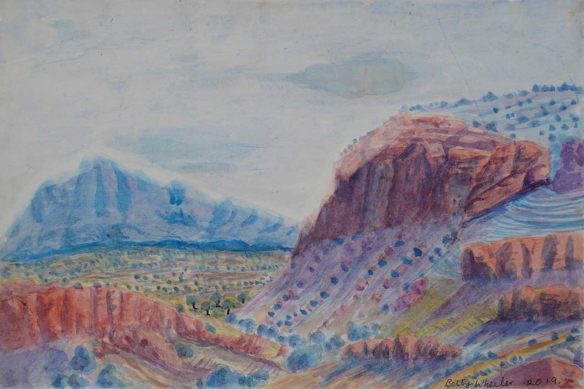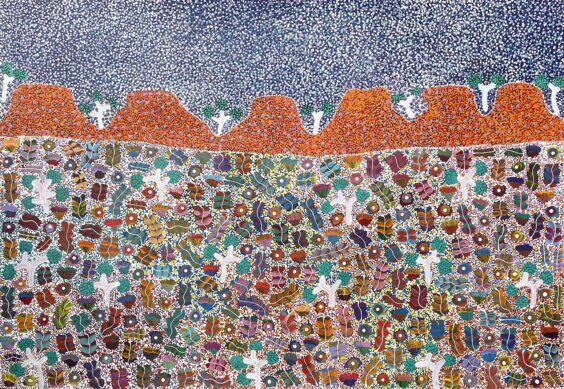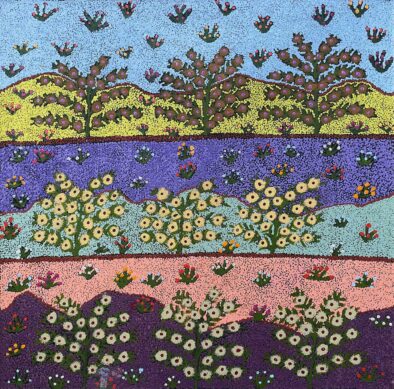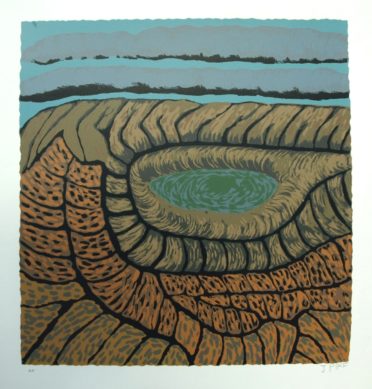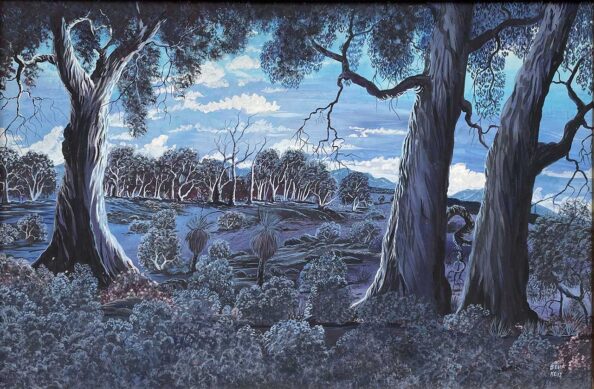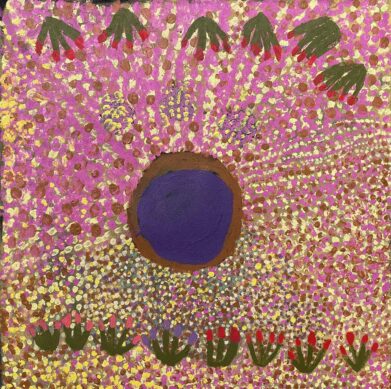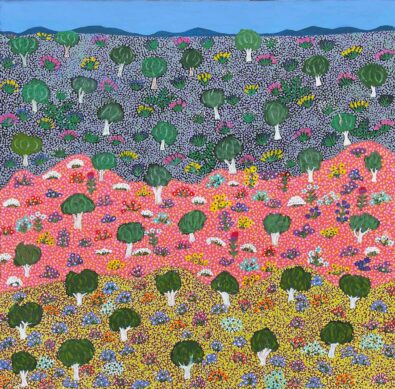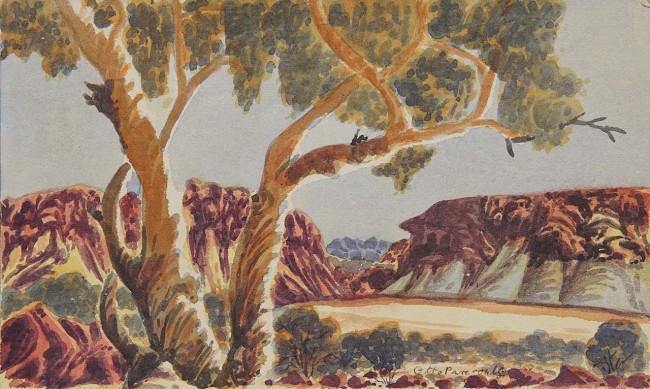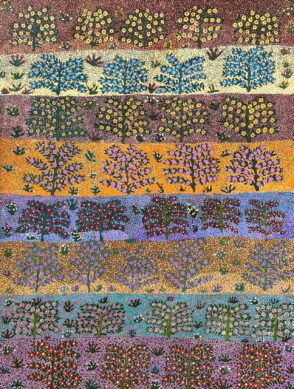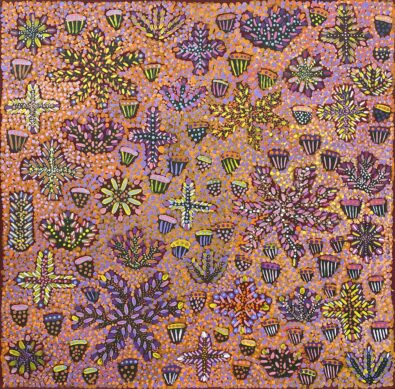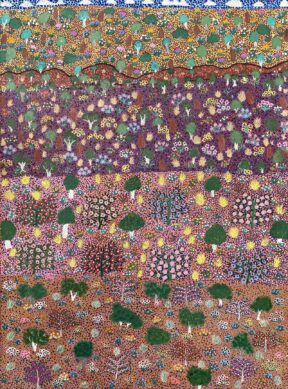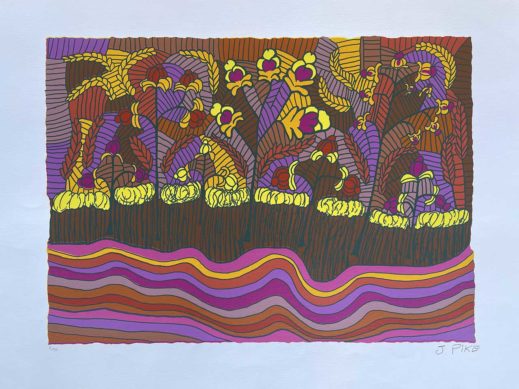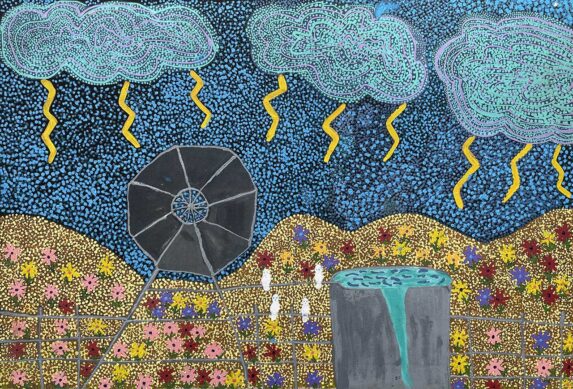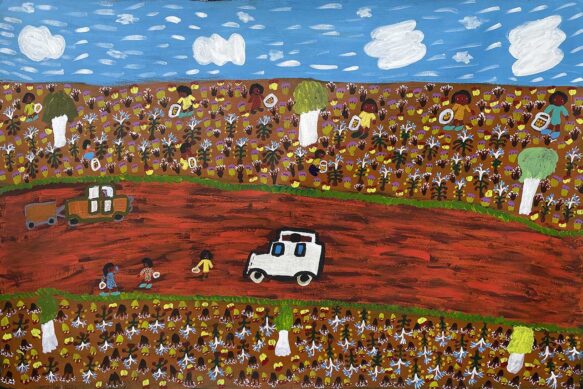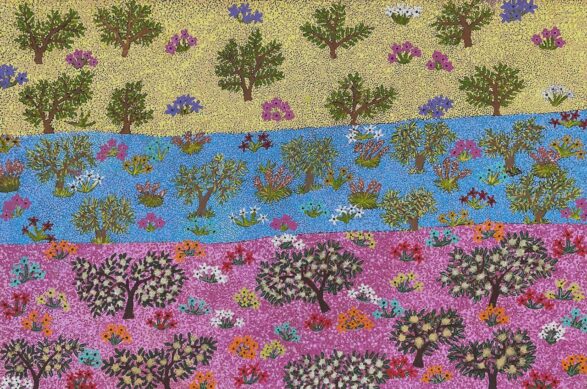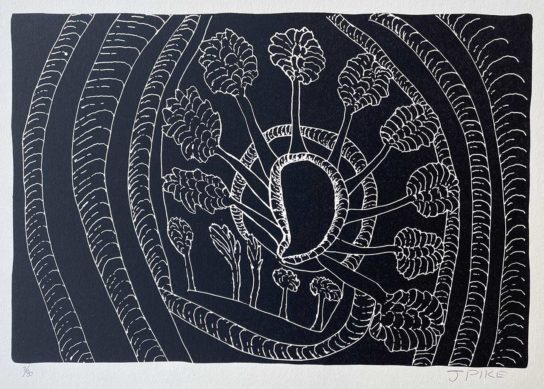Australian Aboriginal Landscape Paintings
See Landscape paintings from Central Australian Aboriginal artists at reduced prices. All works are available for sale by enquiry.
Aboriginal art has maintained a different approach to Western art in the way in which landscapes are presented. Many Aboriginal paintings show the terrain more as a map seen from above. This accords with the idea that Indigenous people needed to maintain a conceptual map in their head of the territory over which they travelled. With only memory and song to aid them in understanding their Country, these visual maps have more recently been rich resources of artistic expression for painters when recreating their Country. On one level these maps of terrain show the physical world of the artist, but on top of that may be laid out the metaphysical information that relates to this Country. So landscapes contain associated information on Dreaming and ceremonial sites, Creation journeys and Songlines, sources of food, water and other natural resources. The landscape becomes an index of resources and meaning for the artist. The desert artists who laid out these landscape maps are hunters and trackers. They are accustomed to looking down and reading the information that the desert sands reveal about everything that has passed this way. So to some extent the majority of desert paintings are landscapes that hold great meaning and information for the people of the land.
Other Aboriginal artists have made a conscious choice to present landscapes of their own Country more in the format familiar in Western art. Famously Albert Namatjira gained sensational recognition during the 1940s and 1950s with exquisite watercolours that revealed the beauty of the desert interior of Australia. Perhaps surprising his audience with both the realist skills of his art and the sense of colour contrasts of the desert, Namatjira established a legacy that continues to this day. His extended family continues to paint in the Hermannsburg watercolour tradition.
Other artists have blended the styles of realistic landscape painting with the techniques of aerial perspective and dot painting infill. Artists from the Alyawarr language groups at Ampilatwatja and neighbouring communities in Central Australia have elected not to directly paint references to the stories of their Dreamings, but to show the landscapes where the Creation mythologies took place. Their landscapes are seen from an elevated position and are composed of tiny dots covering the surface of the painting.
The role of landscape painting may well have a different purpose in Aboriginal art than in Western art. It remains a representation of particular location, but one that is often loaded with other information shown in symbolic form. Perhaps what we need to extract from these landscapes is an appreciation of the knowledge and history that goes into these images of the land. We hope this selection of works is a useful overview of the range of Aboriginal landscapes being produced in Australia today.
View paintings from Aboriginal art regions:

